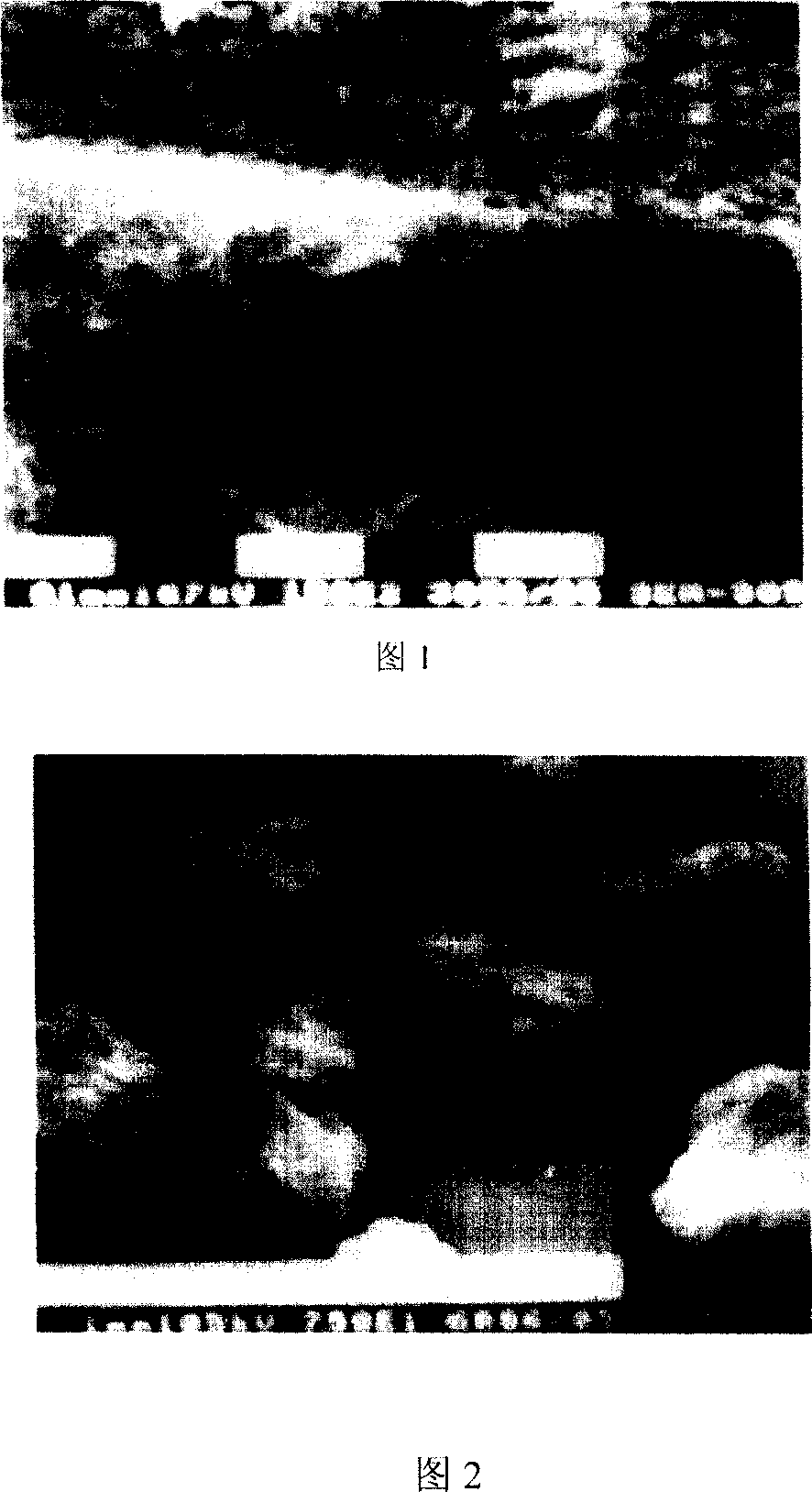Preparing process of cellulose-acrylate composite microsphere
A technology of acrylate and composite microspheres, which is applied in the field of preparation of composite microspheres to achieve good uniformity, easy control, and wide application prospects
- Summary
- Abstract
- Description
- Claims
- Application Information
AI Technical Summary
Problems solved by technology
Method used
Image
Examples
preparation example Construction
[0019] A preparation method of cellulose acrylate composite microspheres:
[0020] In the first step, powdery cellulose and emulsifier are dispersed in water to form an aqueous phase;
[0021] In the second step, the acrylate is dispersed into an organic solvent to form an oil phase;
[0022] The third step is to add the oil phase to the water phase under the condition of stirring at a speed of 100-1000 rpm, raise the temperature to 55-65°C, and then add the persulfate initiator; continue to heat up to 65-90°C, and react 0.5~6 hours,
[0023] In this example, you can choose:
[0024] Add the oil phase to the water phase with stirring at a speed of 100 rpm, raise the temperature to 55°C, and then add the persulfate initiator; continue to heat up to 65°C, and react for 0.5 hours;
[0025] Add the oil phase to the water phase with stirring at a speed of 1000 rpm, raise the temperature to 65°C, and then add the persulfate initiator; continue to heat up to 90°C, and react for 6 ...
Embodiment 1
[0038] Weigh 70g of methyl methacrylate, 30g of isobutyl methacrylate and 120g of cyclohexane organic solvent and mix them into an oil phase.
[0039] Take 24g of 200-mesh microcrystalline cellulose, and add 60g of water containing 2g of polyoxyethylene nonylphenol ether and 0.5g of sodium dodecylsulfonate at a stirring speed of 200 rpm to form an aqueous phase. At the same stirring speed, add the oil phase. Heat up to 60°C, add 0.5g of ammonium persulfate initiator, continue to heat up to 70°C, and react for 3 hours. Cool to room temperature, filter out the liquid phase, wash with water, and dry at 80°C to form cellulose acrylate composite microspheres. See the attached table for the performance results of the samples.
Embodiment 2
[0041] The particle size of microcrystalline cellulose is 100 mesh, the amount of organic solvent cyclohexane used is 480g, the amount of water used is 480g, and the stirring speed is 500 rpm. Other formulas and processes are the same as in Example 1, and the prepared cellulose Acrylate composite microspheres, the performance results are shown in the attached table.
PUM
| Property | Measurement | Unit |
|---|---|---|
| particle size (mesh) | aaaaa | aaaaa |
| particle size (mesh) | aaaaa | aaaaa |
Abstract
Description
Claims
Application Information
 Login to View More
Login to View More - R&D
- Intellectual Property
- Life Sciences
- Materials
- Tech Scout
- Unparalleled Data Quality
- Higher Quality Content
- 60% Fewer Hallucinations
Browse by: Latest US Patents, China's latest patents, Technical Efficacy Thesaurus, Application Domain, Technology Topic, Popular Technical Reports.
© 2025 PatSnap. All rights reserved.Legal|Privacy policy|Modern Slavery Act Transparency Statement|Sitemap|About US| Contact US: help@patsnap.com

